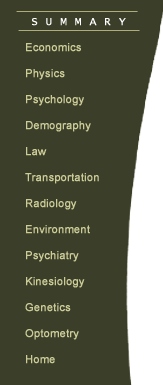|
Optometry
Probing
the eye with virtual reality
Thanks to an
immersion cave equipped with a 3-dimensional sound and image system,
researchers can penetrate into the human eye virtually. Equipped
with cybernetic glasses and gloves, they watch blood vessels contract,
hear the heartbeat and can touch the optical nerve. Acquired at
a cost of 1.8 million dollars, this virtual environment is the only
one in Canada dedicated entirely to applied human research.
Observing the
infinitely small in the eye is one of the many simulations carried
out at Jocelyn Faubert's virtual reality and image processing centre
at the psychophysics and visual perception laboratory. The professor
in the School of Optometry at Université de Montréal
studies the human visual system, including problems related to presbytia,
macular degeneration and optical correction.
"Using synthetic images created by computer and projected on
the floor and three walls, the cave creates the illusion of a real
environment. But the difference is that the subject can move around
without danger," says professor Faubert. "His slightest
movement makes the images he sees move. You can also do the reverse:
the subject is immobile in the middle of the room and the images
give him the impression he is moving."
The cave automatic
virtual environment (CAVE) makes it possible to see how people behave
in a fictitious environment when information is complex. For example,
how do you find a path through a crowd, in traffic or when going
up an escalator. Researchers can evaluate individuals' capacities
to move and find objects.
"For the
elderly and persons suffering from a pathology of the eye, it is
often difficult to move around in places where action is intense,
because motion comes from many sources. The cave makes it possible
to analyze daily activities more realistically than on a two-dimensional
screen," says the winner of the Scientific Prize of the Canadian
Institutes of Health Research and holder of the Essilor Industrial
Chair.
Experiments
conduced at the virtual reality and image processing centre are
designed to help researchers better understand dysfunctions relating
to perception of space, form and motion, among other things. This
kind of disturbance is found most often in the elderly, in particular
people suffering from Alzheimer's disease, Parkinson's disease and
macular degeneration.
Researcher :
Jocelyn Faubert
Phone : (514) 343-7289
Funding
: Canadian Foundation for Innovation, Essilor Industrial Chair,
Canadian Institutes of Health Research, Natural Sciences and Engineering
Research Council (NSERC)
|
